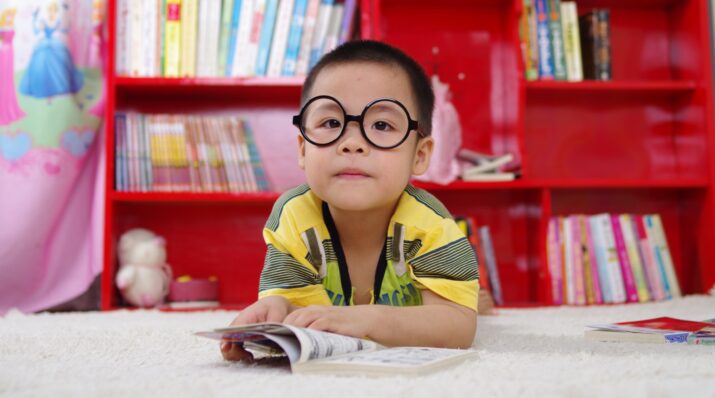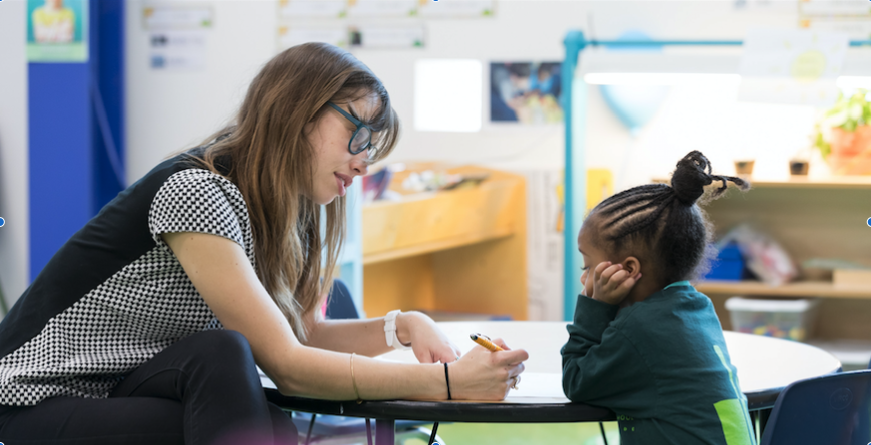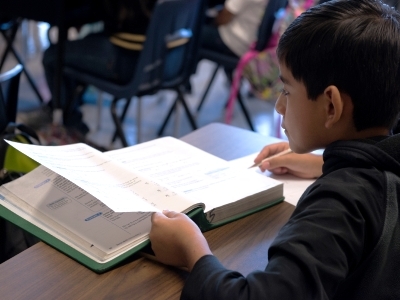Collaborative Problem-Solving Around Challenging Behaviors in Kindergarten
Topics

Together, educators are doing the reimagining and reinvention work necessary to make true educational equity possible. Student-centered learning advances equity when it values social and emotional growth alongside academic achievement, takes a cultural lens on strengths and competencies, and equips students with the power and skills to address injustice in their schools and communities.
Providing Agency for Our Most Challenging Students, Part 1
Teachers can employ Collaborative Problem Solving to empower students with persistently challenging behaviors to change.
You may be familiar with the concept of the school-to-prison pipeline. The validity of this concept is built on the fact that overly punitive policies in schools towards misbehavior disproportionately impact the lives of our most disadvantaged students which has resulted in disproportionate rates of incarceration among poor and minority youth.
Simultaneously, if you work in a school, you have likely worked with students who demonstrate persistently challenging behaviors. As educators we need tools to respond to these behaviors. The tendency in the past has been to address these problems with punishments, under the assumption that if we punish kids more they will be inclined to behave in ways that are more productive for themselves and the community. However, as the concept of the school-to-prison pipeline suggests, these methods aren’t working—especially for our most disadvantaged kids.
Over the last several months, Two Rivers, a preschool to eighth grade public charter school in Washington, D.C., has been on a journey to tackle these problems in a different way. Building on the work of Dr. Ross Greene from Lives in the Balance, Caltha Crowe’s Solving Thorny Behavior Problems, and Zaretta Hammond’s Culturally Responsive Teaching and the Brain, we have developed a simple five step routine to invite students who exhibit persistent challenging behaviors to become partners in finding a solution.
With students from Kindergarten through eighth grade, we used the following steps:
- Listen: where we listen empathetically to hear the student’s concern about the persistent problem;
- Share: where we share our concerns about the persistent problem;
- Problem Solve: where we invite the student to come up with solutions with us that both address their concern and our concern and can realistically be implemented;
- Implement: where we put the plan into effect;
- Reflect: where we evaluate the effectiveness of the plan with the student.

Collaborative problem solving notes
Prior to engaging in this work, we identified and surfaced an important underlying belief: student misbehavior was not the result of a willful act to disrupt our classrooms. Instead, students want to do well and will do so if they have the social emotional skills to succeed. By making this idea our starting point, we honor the best in our students and acknowledge them as full human beings trying to get better at emotion management and relationship building just as much as they are trying to improve their reading or math skills.
Through this work, we hope to break the school-to-prison pipeline, but more importantly, to give our students agency in owning their social-emotional learning as well as their academic learning.Examples from kindergarten teacher Rachel Owens and middle school teacher Ama Teasdel are illustrative of the success that we have seen with this work. In today’s piece, we hear from Rachel about what Collaborative Problem Solving can look like in Kindergarten. In our next piece, we will hear from Ama about her experiences with this model in a middle school classroom.

Teacher assisting young learner
A Kindergarten Example from Rachel Owens
“Sometimes my brain tells me to do what I want to do instead of following the group plan...”
James and I were sitting at my desk in the middle of a discussion about one of his challenging behaviors when he said this and immediately opened my eyes to the power of problem solving conferences. As an early childhood educator for the last four years I was initially skeptical about the effectiveness or appropriateness for problem solving conferences in kindergarten because of the struggle five- and six-year-olds can have with expressive language and emotional awareness. However, for the last two months at Two Rivers PCS, teachers, administration, and instructional leaders have been studying the impact of these problem solving conferences as an intervention for students like James, who exhibit persistent challenging behaviors in the classroom.
Challenging behaviors in classrooms can sometimes be extremely frustrating, bring up undiscovered personal triggers, and even stump the most experienced teachers. After studying the impact problem solving conferences can have..., I would highly recommend using this strategy.
I identified James as a student who might benefit from one of these conferences because he demonstrated a need for more behavioral support than what 80 percent of my classroom was receiving. His conduct was interfering with his learning and his ability to interact appropriately with others. This challenging behavior mainly consisted of him becoming distracted by others or actively distracting others during whole group instruction and whole group activities. I collected some data to better understand the problem, and found that in a period of 10 minutes, James was distracted by or distracting others six times. This data startled me; as I watched him I could see him missing out on discussion questions, targeted learning, and opportunities for both social and academic growth. The biggest shock was knowing that James had been struggling with this behavior since August, and we were only beginning to address it successfully with problem solving conferences the following February.
As we prepared to have problem solving conferences with students, I was still not convinced this was going to be a viable strategy for James. But in thinking this, I had created a limiting story for him based off of undiscovered biases and personal triggers I had as his teacher. Diving into this work required our teachers and instructional leaders to be extremely honest and vulnerable with themselves. Having a professional learning community that was engaging in the same work created a rich, safe environment where accepting our faults became the norm. This was an important step in our professional development cycle, because it prepared us to experience similar emotions our students would soon discover within their problem solving conferences.
Armed with data around James’ challenging behavior and steps to conducting a problem solving conference, I sat down with him one afternoon in February to discuss his distractibility during whole group. The first step of this technique is to listen with empathy; something I had initially thought I’d mastered after the last four years of teaching. James quickly proved me wrong. Instead of interrupting James with preconceived notions or solutions, I forced myself to actively listen to everything he said. Without my help, opinions, or suggestions, James was able to identify his own challenging behavior, give reason behind the cause, and come up with a possible solution he could try.
“Sometimes my brain tells me to do what I want to do instead of following the group plan. But I can look at my friends to see what they are doing and then I can know what the group plan is. Or maybe I could think with my eyes and then do what they do.”
After finishing this problem conference, I noticed an immediate change in the way James managed his challenging behavior. I would normally have felt comfortable stopping the problem solving conference practice here. However, I believe that an important aspect of developing a new practice requires pushing yourself to try the technique, analyze its effectiveness, revise your strategy, and practice it again. Repeating the practice requires you to build and refine new skills for continuous improvement. So I continued with James constantly collecting and analyzing behavioral data to create new strategies to discuss during the follow-up problem solving conferences.
It has been two months since we started this work, and I can confidently say that problem solving conferences have changed my classroom as seen through James’ daily interactions with adults and peers. Challenging behaviors in classrooms can sometimes be extremely frustrating, bring up undiscovered personal triggers, and even stump the most experienced teachers. After studying the impact problem solving conferences can have on students exhibiting persistent challenging classroom behaviors, I would highly recommend using this strategy with other students exhibiting similar behaviors. In a short amount of time, I have seen the power of expressive language develop and grow in James. He is building the skills necessary for learning how to become accountable for his actions all while decreasing the frequency of the identified target behavior.
These methods clearly work, and are contributing to efforts to break the school-to-prison pipeline not by punishing students but inviting them in to solve their most challenging problems. To learn more, check out our next blog entry when we explore what this can look like in middle school.
Read Part 2 of Providing Agency for Our Most Challenging Students: Collaborative Problem Solving around Challenging Behaviors in Middle School.




